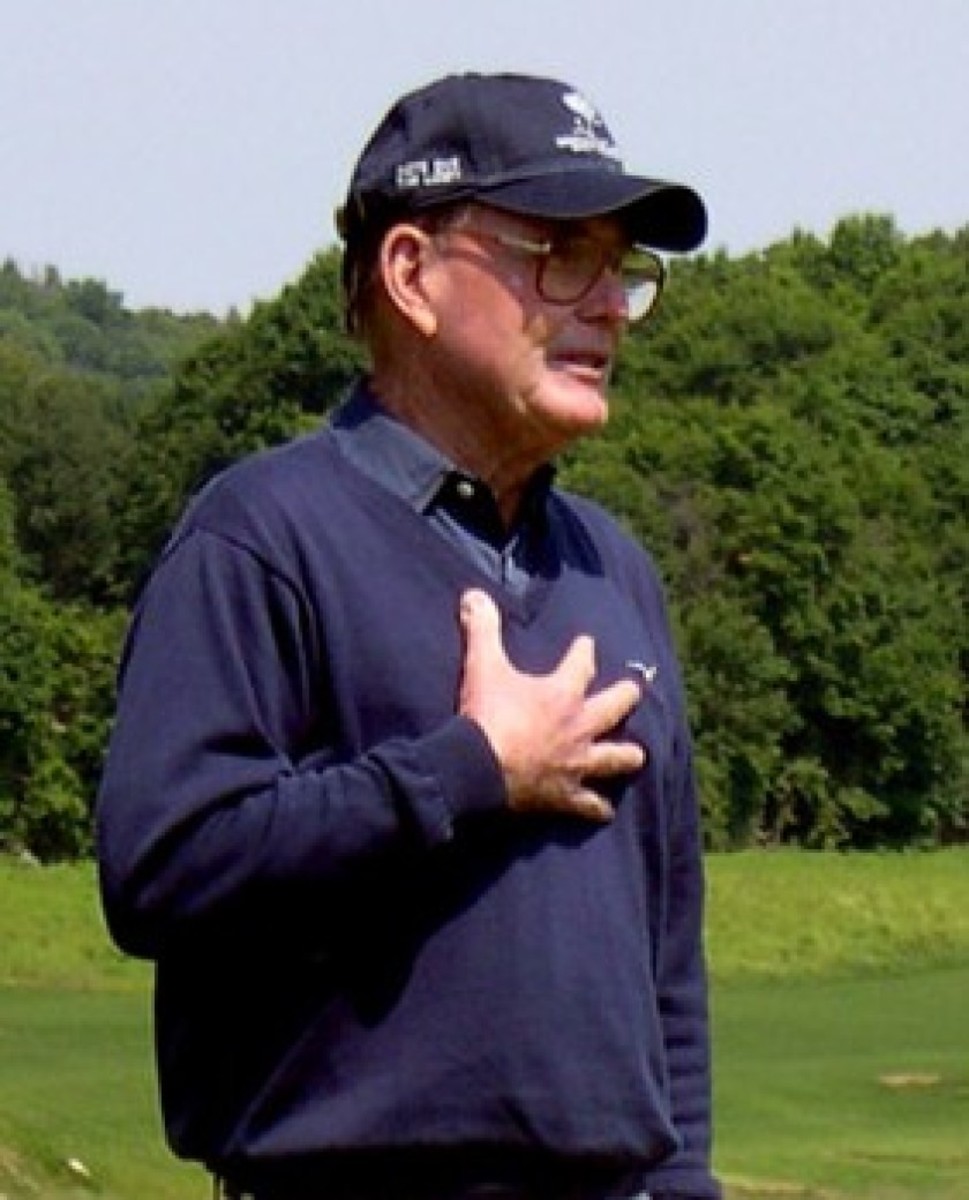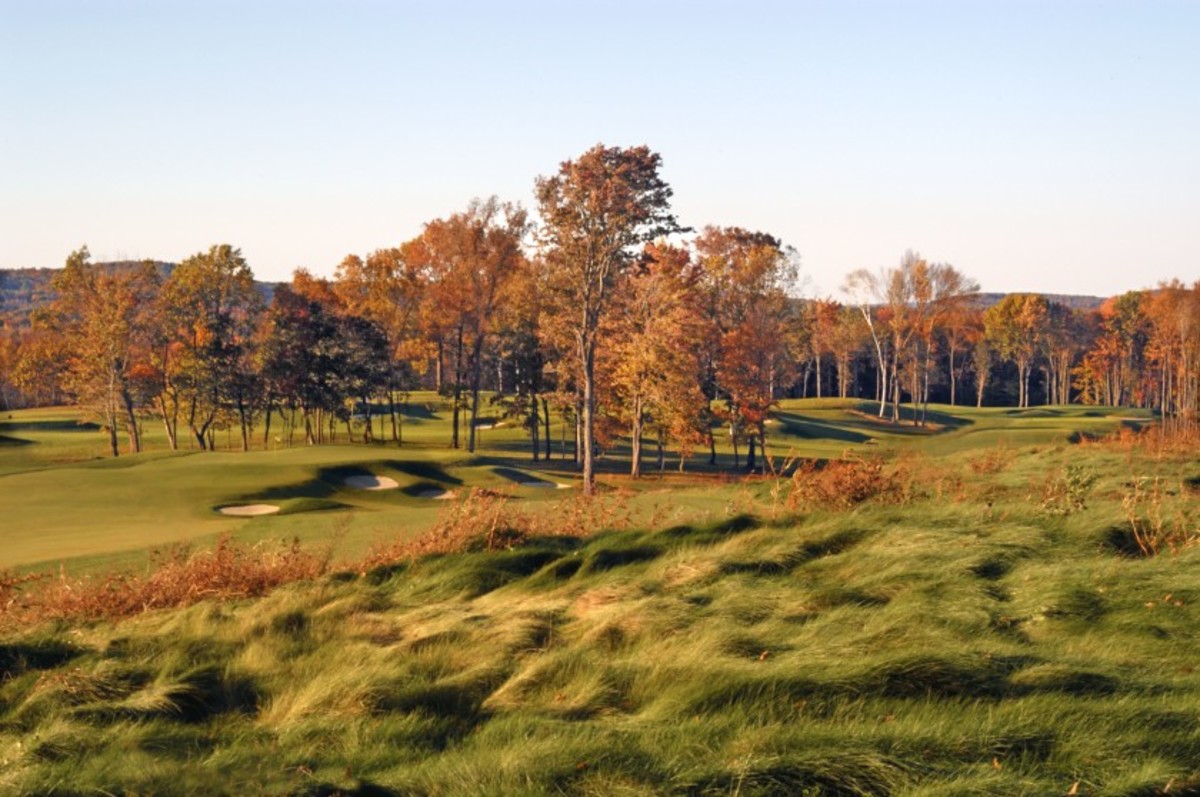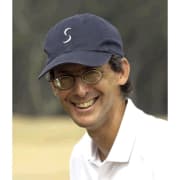Pete Dye, 94, leaves bold legacy of golf design as he passes away

The most important golf course architect of the modern era has designed his last layout. Pete Dye, 94, died Jan. 9 in Delray Beach, Fla., after a long struggle with dementia.

A native of Urbana, Ohio, he was an avid golfer who left behind a successful career as an insurance salesman in the Indianapolis area to start a second career as a golf course designer. He was joined in the effort by his wife, Alice O’Neal Dye, whom he had married in 1950 and who died in February. She was the better golfer, having played for Rollins College (where they met) and winning nine Indiana Women’s Amateurs, two U.S. Senior Women’s Amateurs and competing in the 1970 Curtis Cup. Pete, for his part, was a pretty fair player himself, having qualified for the U.S. Amateur five times, playing in the 1957 U.S. Open and winning the 1958 Indiana Amateur.
But it was his love of golf course turf, maintenance and design that provided the opening to his self-made second life. He had tended a nine-hole course in Urbana that the town had built. When he was stationed in the Army at Fort Bragg, N.C., in the early 1940s, Dye not only was responsible for maintaining the base golf course but regularly drove his superiors to nearby Pinehurst, where Pete got to meet Donald Ross and saw him play golf.
By the late 1950s, Pete and Alice were studying agronomy with professors from Purdue University. They built the country’s first prototype USGA-specification green on the grounds of Indianapolis Country Club, where Pete was green chairman – until he lost the greens. They managed to design and build a few rudimentary courses in the area, but it was not until they went off on a tour of Scotland’s links in 1963 that their eyes were opened to links golf design. Prestwick exposed them to the use of railroad sleepers – or ties, to Americans – as a way to shore up vertical severity. At St. Andrews, they marveled at how modest uplifts could create compelling slopes while obscuring what lies just behind.
Upon their return to the U.S., the Dye revolution unfolded. In an era dominated by a style of golf architecture that emphasized power, aerial golf and the manufacture of inland courses with heavy machinery, Pete Dye fundamentally challenged what the likes of Robert Trent Jones Sr., Dick Wilson, George Fazio and George Cobb were doing. They built their greens and bunkers up above the natural grade to facilitate visual impact and drainage. Dye, by contrast, innovated in the field but emulating the classic architectural conceit of building down into the existing grade and working off of the natural terrain.
Much of his design work was innovated in the field, sometimes on the back of an envelope, more likely traced into the dirt and then erased with a swipe of the foot. What followed proved to be eye-opening, controversial but inventive for its low-angularity, its emphasis upon alternative paths, and for the stark, sometimes lunar boldness of the features he created. Crooked Stick in Carmel, Ind., 1966; The Golf Club in New Albany, Ohio, 1968; Harbour Town Golf Links on Hilton Head Island, S.C., 1969. The latter course debuted as a PGA Tour site and was immediately lauded for the intimacy of its features and for the demands it placed on precise shot-making upon approach.

TPC Sawgrass’ Players Stadium Course in Ponte Vedra Beach, Fla., (1981) was drained out of a swamp and had a raw, boney quality that has subsequently gotten grassed over but that still is compelling for its visual intensity. At PGA West’s Stadium Course in LaQuinta, Calif., (1986), Dye and his colleagues created a vibrant real-estate golf community out of a flat, dry site. And when Dye wanted to turn up the gas and make a show of it, he could. The Ocean Course, Kiawah Island, S.C., (1991) had its opening at a Ryder Cup that humbled the world’s best players along a narrow, wind-starched run of oceanfront dunes.
Often overlooked in what Pete Dye created was how he transformed the entire business of golf design. He reclaimed the classic, Golden Age craft of “design/build” at a time when the conventional mode for architects was to draw extensively on reams of paper and hand the plans over to a construction company.
Dye employed what would become an entirely new generation of young, hard-working laborers who designed, built and finished what they created and who would go on to form the centerpiece of the Second Golden Age. Among those who learned the trade under Pete and Alice were Bill Coore, Brian Curley, Tom Doak, Tim Liddy, Chris Lutzke, Scott Poole, Lee Schmidt, Jim Urbina, Bobby Weed and Rod Whitman. The Dyes’ family also got into the act, with Perry Dye, P.B. Dye and Cynthia Dye McGarey all making their mark.
Pete also was generous to the public in his work – often in ways that were not well understood. In the late 1990s, I found out that they were doing what amounted to some public-access work at a considerable discount. On behalf of my hometown of Bloomfield, Conn., I offered them a design fee of $1 to create a municipal course for us. Pete complied graciously, and the result, eight years later and with considerable input from his longtime design associate, Liddy, is Wintonbury Hills Golf Course (2004). It’s one of those enjoyable, uncluttered, walkable ground-hugging layouts that help define successful public golf.
What a powerful legacy he has left behind. Pete Dye will be missed. But his vision lives on and informs the next generation of design.
To receive Morning Read’s newsletters, subscribe for free here.
